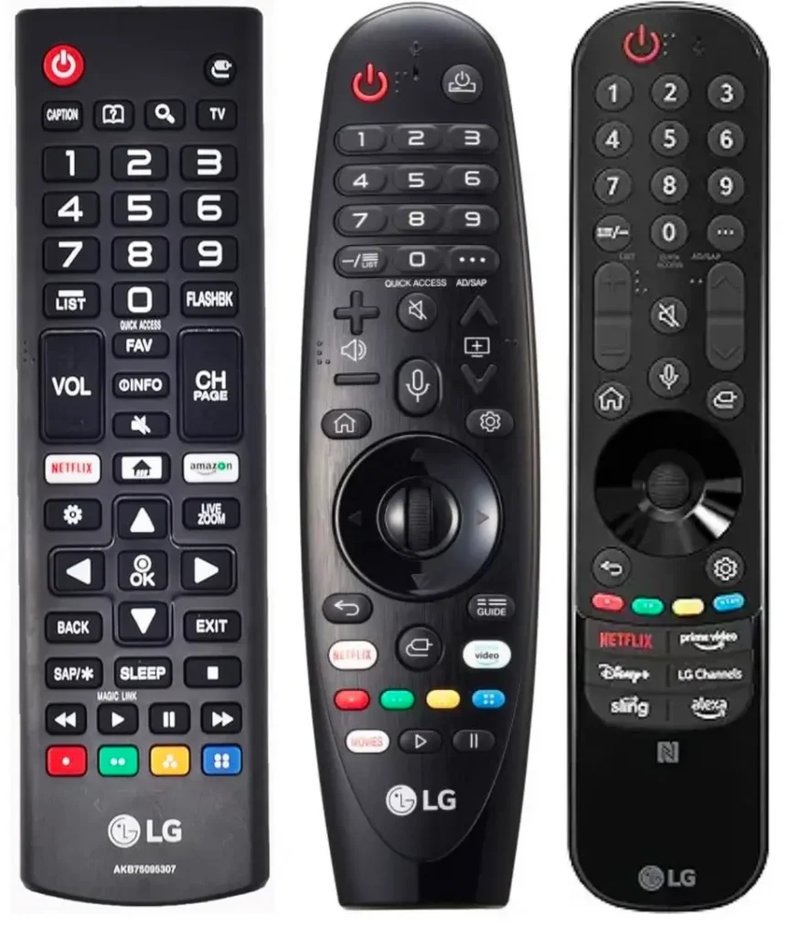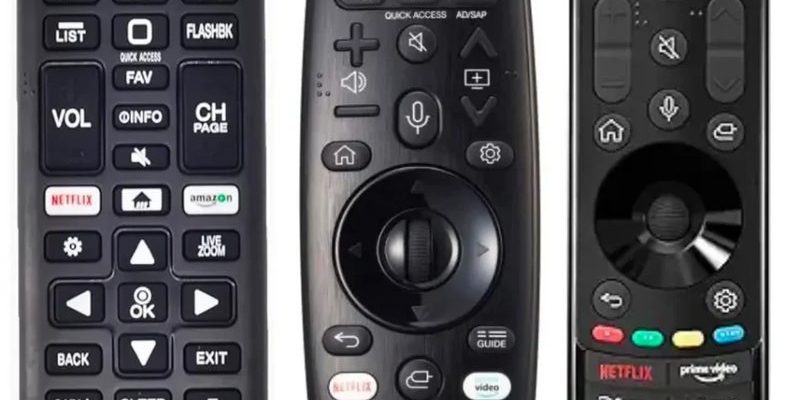
Programming LG TV remotes for older TVs isn’t rocket science, but it sure can feel like it if you’re new to the world of codes, pairing, and the mysterious art of “syncing devices.” Imagine your remote as a universal passport. It has to learn the local language (the TV’s code), shake hands (pair), and, every now and then, get a new battery or a reset if it’s feeling grumpy. As someone who’s spent too many evenings chasing a lost signal or jabbing buttons in desperation, I want to walk you through every step—no tech-speak, just real talk.
Understanding LG TV Remotes: What Works With What?
First things first: not all LG TV remotes are created equal. Some are designed specifically for those shiny, new smart TVs—with fancy buttons, voice controls, and sleek designs. Others are your basic, old-school clickers. If you’re trying to program an LG remote for an older TV, you’ve got to know which kind you have.
Here’s the thing—older TVs are usually a bit picky. They don’t understand Bluetooth or some of the “magic” features on newer LG Magic Remotes. Instead, they depend on infrared (IR) signals, which means your remote needs a direct line of sight to the TV’s little receiver window. If you try to use a modern remote with only Bluetooth, you’ll probably just end up talking to yourself.
In my experience, the classic LG remotes with number pads and power buttons work best for older TVs. If you’ve got a remote that came with a newer smart TV, double-check for an IR blaster (it’s usually that little dark-tinted window at the top of the remote). No IR? No luck. But if you do see it, there’s hope! It just needs to “learn” your TV’s language.
Getting Started: Batteries, A Clean Slate, and Common Sense
I’ve learned the hard way that programming a remote without fresh batteries is like trying to run a marathon in flip-flops. It just doesn’t work. Start by flipping the remote over, sliding off the battery cover, and popping in new AA or AAA batteries (whichever your remote takes). Trust me, low batteries cause all sorts of weird glitches—random button presses, delayed responses, or nothing at all.
Before getting into codes or sync steps, do a quick check for any buttons that feel sticky or stuck. Sometimes, old remotes accumulate gunk (hey, popcorn night happens), so wiping them down with a soft cloth can help. If your remote’s been through a lot, consider giving it a reset. Most LG remotes reset by holding the “Power” and “Mute” buttons together for five seconds, but double-check your model just to be sure. Resetting can clear out any bizarre settings you might have accidentally programmed.
A remote that’s fresh and reset is like a blank canvas—ready to take on the challenge of pairing with your older TV.
Programming: Manual Codes vs. Auto-Search Mode
Let’s talk about how programming actually works. LG remotes usually have two basic modes: entering a programming code manually, or using an auto-search mode. Think of manual codes like typing in a secret password—the remote only opens up if you get it right. Auto-search is more like scrolling through every possible option until the TV gives a little sign of life.
- Manual Code Entry: Find the LG TV remote’s instruction booklet (or Google your remote’s model number plus “codes”). There’s usually a list of codes for different TV brands and models. For a classic LG TV, you’ll look for the LG code (often something like 101, 003, or 005… but check your list!). Hold down the “Setup” button until a light comes on, then tap in the code using the number pad. Point the remote at the TV and hit “Power.” If it turns on, you’re golden!
- Auto-Search Mode: If you can’t find the right code, don’t worry. Most remotes let you hold down “Setup” or “TV” until the light blinks, then press “Power” repeatedly until your TV responds. Each tap sends a signal with a new code. When the TV finally reacts, press “Enter” to lock it in.
Sometimes this takes patience, but it’s worth it when you finally hear the familiar click or see the screen flicker on.
Pairing LG Remotes: The Art of “Sync” on Older TVs
You might be wondering, why is pairing even necessary? Pairing is simply making sure the remote and TV are speaking the same “language.” For old-school LG TVs, this just means matching the correct IR code, but the process can feel a little mysterious if you’ve never done it before.
Once you’ve entered the code or used auto-search, you’ll want to check if all functions work—not just the power button. Channel up/down, volume, mute… try them all. If something doesn’t work, repeat the pairing. Sometimes you’ll find a code that kind of works, but not perfectly. (It’s like finding someone who speaks your language but with a weird accent—sometimes you need a better match.)
On classic LG remotes, you’ll usually see a steady red or green LED blink during pairing; this is a good sign. If it flashes and then stays solid, you’ve likely paired successfully. If not, don’t be afraid to start over. This process is more trial-and-error than you might expect, especially with older TVs.
Troubleshooting Common Problems
Let me guess—you followed the steps, but your remote is still giving you attitude. Maybe the power button works but nothing else, or the volume responds with a five-second delay. It’s not just you; this stuff can be tricky!
- Nothing Works: Double-check your batteries and reset the remote. Sometimes, interference from sunlight or fluorescent lights can mess with IR signals. Make sure you’re close enough and nothing’s blocking the “line of sight.”
- Some Buttons Don’t Respond: You might have the wrong code. Try other codes from the list, or use auto-search again. Sometimes, an LG code controls power but not volume, or vice versa.
- Remote Randomly Stops Working: Check for loose battery contacts or a dirty IR sensor on the TV (wipe it gently with a soft cloth). If your remote has been dropped a few times, internal damage could be an issue.
If you’re still stuck, it might be time to consider a universal remote. They’re designed to work with just about any TV, old or new, and often include more IR codes than the basic LG remote.
Comparing Universal Remotes vs. LG-Branded Remotes
Here’s something not everyone admits: sometimes, the official LG remote just doesn’t cut it for older televisions. Universal remotes are like Swiss Army knives—they’re flexible, include codes for dozens of brands, and are often easier to program because they expect you to have a weird old TV in the first place.
But—and it’s a big but—universal remotes sometimes miss special LG functions, like input selection or quick-access buttons. LG-branded remotes, even the basic ones, usually do a better job with these features. If you care more about basic channel-surfing and volume, universal is fine. If you want all the bells and whistles, stick with LG if you can get the pairing to work.
Honestly, I’ve had great luck with those $10 universal remotes from the drugstore—they’re cheap, sturdy, and pretty forgiving when you make mistakes. But if you want something that “feels” right for your LG TV, hunt down the original or a compatible LG replacement.
Tips for Keeping Your Remote (and TV) Working Smoothly
You wouldn’t believe how much a little TLC extends the life of your remote and TV combo. Here are the basics I always recommend:
- Change batteries every six months, even if you think they’re still good. Weak batteries are the
- Clean your remote regularly—crumbs and spills don’t mix well with buttons.
- Store your remote in the same spot (I know, easier said than done). The more it disappears, the more wear and tear it gets.
- Keep the IR sensor on the TV dust-free. A dusty sensor blocks the signal, making you think the remote is broken when it’s really just dirty.
If you ever spill something on the remote, pop out the batteries immediately and dry the device as best you can. Sometimes, taking it apart (there are usually tiny screws under the battery cover) and letting it air out will save it.
When To Replace: Signs It’s Time for a New Remote or TV
No one likes spending money on a new remote (I mean, who gets excited about that?), but sometimes it’s the right call. If you find yourself having to reset, re-code, or slap your remote daily just to get it to work, it’s probably on its last legs. Likewise, if your older TV is starting to show its age—lines on the screen, no response to any remote, or only turning on by banging on the top—it may be time to upgrade.
The cost of a good universal remote is usually less than a fancy dinner, and it can buy you months or even years of hassle-free TV time. Just make sure to keep any codes you use written down (a sticky note in the battery compartment works wonders). If you upgrade your TV, an LG Magic Remote can be a fun, futuristic change with gestures and voice commands—but remember, those won’t help with true old-school TVs.
Wrapping Up: Making Peace With Your LG Remote and Older TV
Programming LG TV remotes for older TVs isn’t always a one-and-done deal—it can take trial, error, and a bit of patience. But once you nail the right code or finally see that volume bar jump, it feels like winning a tiny tech lottery. Whether you stick with the LG original or grab a universal backup, the key is giving yourself the space to try, mess up, and try again.
Sooner or later, you’ll have that trusty remote back in action, letting you settle in for movie night, stress-free. If nothing else, at least you’ll have a few good stories to tell about the day you outsmarted your own electronics. And really, isn’t that what being a TV owner is all about?
